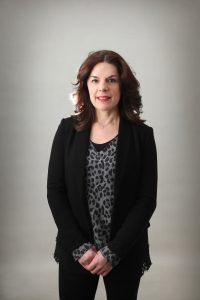Our Artificial Intelligence solutions, which are going to revolutionize the fishing sector, allow us to improve the discrimination of target species and know the best fishing areas.
Our recent commitment to AI has allowed us to develop solutions that improve the ratio of tons of fishing per nautical mile and avoid fishing for non-target species. A triple frequency buoy, which manages to discriminate by type of tuna, our latest novelty that we will present soon.

In conversation with Ibone Rodríguez de Pablo, our CEO, she points out that fishing using satellite buoys equipped with echo sounders “is the most efficient fishing technique, and contributes to the 3 stages of sustainability; economic and environmental because it is efficient in fuel consumption in fishing operations, environmental also because it has very low bycatch rates compared to other fishing gear and finally has a strong social contribution, since tuna is the main source of protein in many areas of the world and on the other hand it is an industry that generates thousands of jobs”.
The incorporation of Artificial Intelligence in our products has allowed us to develop an innovative triple frequency buoy with three different transducers that manages to determine what type of tuna is below the FAD.
“This buoy is the result of many years of research, in which our team of technicians and acousticians have been on board the ships working with the 3 scientific frequencies, collecting, analyzing and contrasting our data with the large amount of scientific information” .
The discrimination of tuna species is a further step for sustainable fishing, since from the boat it will not only be possible to know the amount of biomass it has in a certain location, but it will also be possible to distinguish between different species. This technology will prevent the fishing of unwanted species. “Achieving greater discrimination is one of the main demands of the sector,” says our CEO.
Artificial Intelligence applied to fishing
Recently, we have begun to bet on Artificial Intelligence for its incorporation into certain products. According to Ibone Rodríguez, “we have incorporated AI into our management software to show if the detected biomass is tuna thanks to the fishing algorithm that we have developed after extensive data collection over the years.”
“By analyzing all these oceanographic variables, our model, based on machine learning, is capable of determining which will be the best areas of the ocean, information that our clients use to know where to go fishing, not only on a buoy, but also on a free bank, making your fishing operation even more efficient. We are also able to determine in which areas of the ocean there are more tuna and we have technology capable of identifying the trajectory of a buoy for the next seven days.”
Collaborate with the Sustainable Development Goals (SDG), our main challenge
Our main challenge, which has become a philosophy in recent years, is the commitment to collaborate with the Sustainable Development Goals (SDGs). They are especially focused on number 14, “Conserve and sustainably use the oceans, seas and marine resources for sustainable development.”
Ibone Rodríguez de Pablo, comments that “the commitment to Artificial Intelligence goes hand in hand with sustainability in what corresponds to our field. With our technology we seek to reduce the pollution of the oceans and reduce the impact on marine ecosystems”. He also adds that, “another of our objectives is to provide work in areas that are not developed like Senegal or Ghana, for example.” thanks to our circular economy program, with which we seek not only to recycle and generate the minimum possible impact, but also to generate employment in disadvantaged areas, (SDG number 2, zero hunger)”.
Finally, the General Director wanted to highlight that they are a company with a strong export character, taking their products to more than 20 countries such as Korea, Japan, Taiwan, Senegal, Mexico or Ecuador, where they have their own headquarters.
